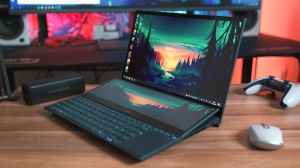The modern gaming landscape demands specialized hardware, and the Graphics Processing Unit (GPU) is arguably the most critical component. For years, NVIDIA's GeForce RTX series has dominated the market, bringing revolutionary features like Ray Tracing and AI-powered upscaling (DLSS) to mobile platforms. A gaming laptop equipped with an NVIDIA card is an investment in future-proof performance, ensuring you can run the latest AAA titles at smooth frame rates and high resolutions.
Choosing the right gaming laptop can be overwhelming, given the multitude of options. This comprehensive guide cuts through the noise, detailing the ten best NVIDIA-powered gaming laptops available right now, analyzing their core features, user feedback, and suitability to help you make an informed decision while upgrading your gaming standards.
How Does An NVIDIA Graphics Card Help In Gaming?
An NVIDIA GeForce RTX graphics card significantly enhances the gaming experience through specialized hardware and software technologies. The core benefits stem from its dedicated architecture:
- Ray Tracing (RT Cores): Dedicated RT Cores simulate the physical behavior of light to render incredibly lifelike and immersive visual environments, featuring realistic shadows, reflections, and global illumination that standard rasterization cannot achieve.
- AI Acceleration (Tensor Cores & DLSS): Tensor Cores power NVIDIA's proprietary AI technology, especially Deep Learning Super Sampling (DLSS). DLSS uses machine learning to render games at a lower internal resolution and then intelligently upscale the image to native resolution, often providing significant frame rate boosts (sometimes exceeding 2x) while maintaining or even improving image quality.
- Low Latency (NVIDIA Reflex): The NVIDIA Reflex technology suite optimizes system latency between the mouse click and the action appearing on screen. This is crucial for competitive esports titles, allowing for quicker reaction times and better aiming precision.
- Max-Q Technologies: NVIDIA uses Max-Q technologies to intelligently manage system power, acoustics, and thermals, allowing powerful GPUs to be efficiently fitted into thinner and lighter laptop chassis without sacrificing too much performance.
Top NVIDIA GeForce Graphics Card Comparison
The current generation of NVIDIA laptop GPUs leverages the Ada Lovelace architecture to provide massive generational leaps in performance per watt. Here is a comparison of the top five chips you will find in high-performance gaming laptops:
|
Feature |
RTX 4090 Laptop GPU |
RTX 4080 Laptop GPU |
RTX 4070 Laptop GPU |
RTX 4060 Laptop GPU |
RTX 4050 Laptop GPU |
|
Architecture |
Ada Lovelace |
Ada Lovelace |
Ada Lovelace |
Ada Lovelace |
Ada Lovelace |
|
CUDA Cores |
9728 |
7424 |
4608 |
3072 |
2560 |
|
VRAM (GDDR6) |
16 GB |
12 GB |
8 GB |
8 GB |
6 GB |
|
Memory Interface |
256-bit |
192-bit |
128-bit |
128-bit |
96-bit |
|
Target Resolution |
4K/High Refresh 1440p |
High Refresh 1440p |
1440p / High FPS 1080p |
High FPS 1080p |
Entry-level 1080p |



